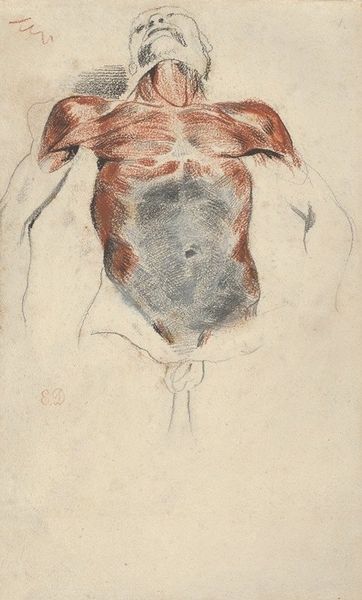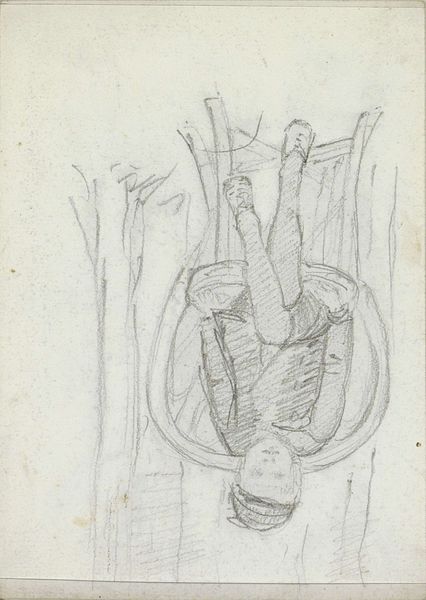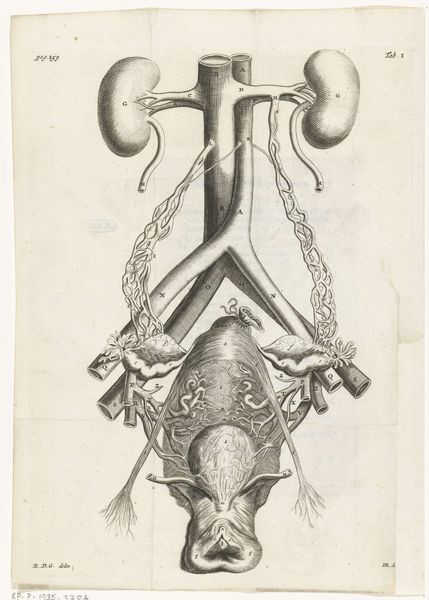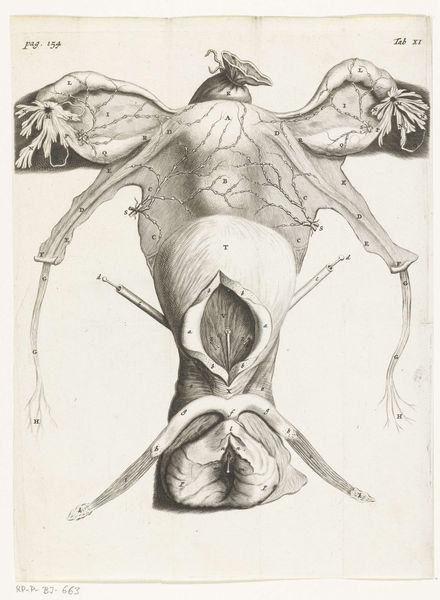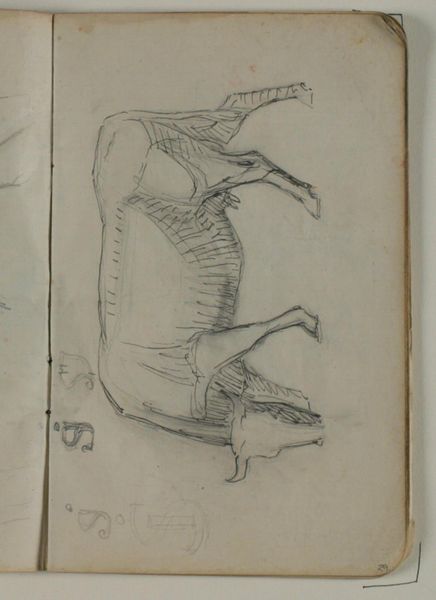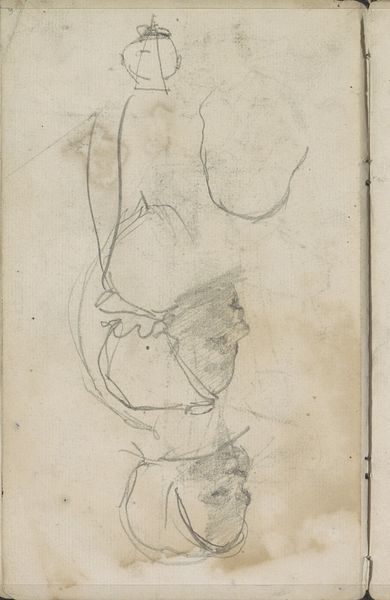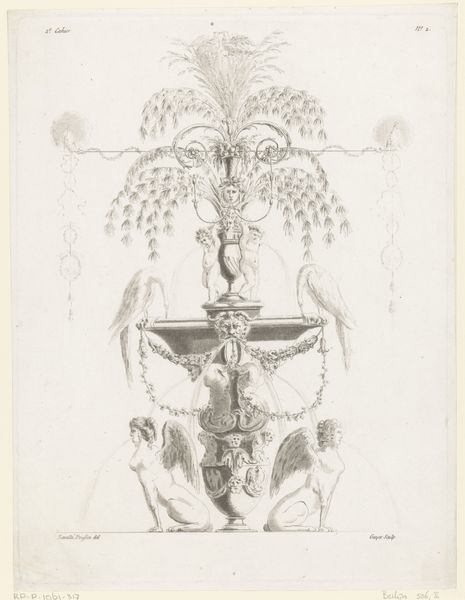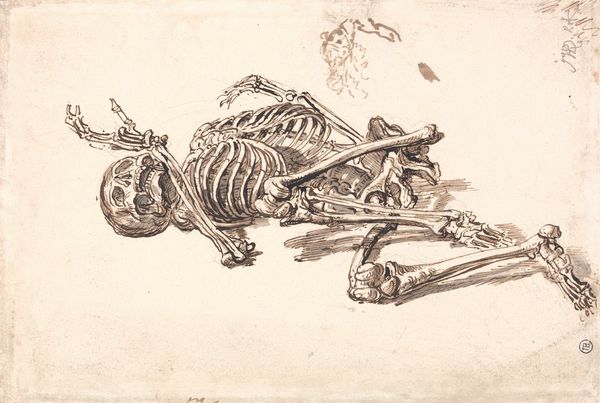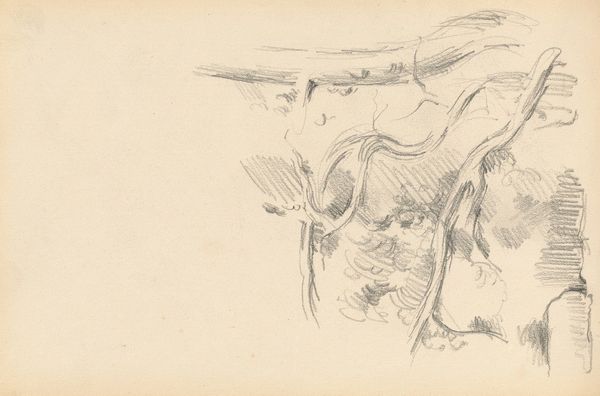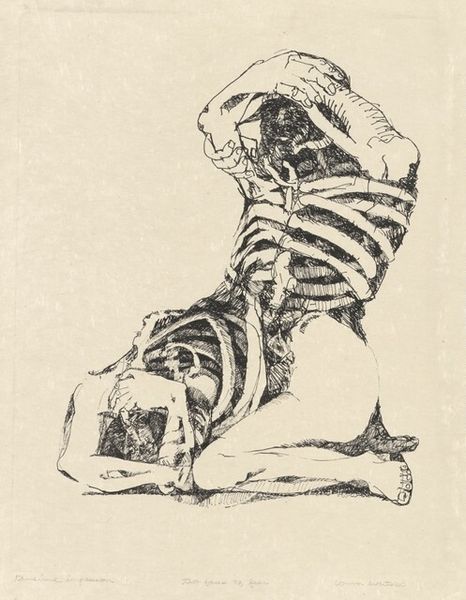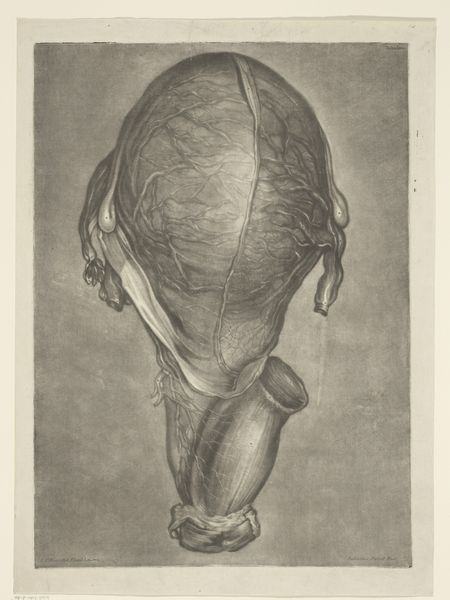
drawing, pencil
#
pencil drawn
#
drawing
#
amateur sketch
#
toned paper
#
light pencil work
#
pencil sketch
#
incomplete sketchy
#
personal sketchbook
#
pencil
#
sketchbook drawing
#
watercolour illustration
#
genre-painting
#
academic-art
#
sketchbook art
#
realism
Dimensions: height 151 mm, width 144 mm
Copyright: Rijks Museum: Open Domain
Jordanus Hoorn created this pencil drawing of a hanging carcass in the late 18th or early 19th century. Butchers, like other tradesmen of this period in the Netherlands, belonged to guilds that regulated production and sale, and it's worth considering whether this drawing might be related to that world. The guilds often played a role in civic life and were linked to particular religious organizations. Butchers provided essential services, but their work was also bloody and raw, set apart from more refined trades. The drawing, with its detailed depiction of the animal’s exposed interior, walks a line between scientific observation and stark realism. Understanding the social hierarchies of the time, the status of different trades, and the visual language they employed can help us to better understand the cultural role of such a visceral image. Researching guild records, religious affiliations, and the broader social history of the Netherlands can further illuminate the context in which this drawing was created and viewed.
Comments
No comments
Be the first to comment and join the conversation on the ultimate creative platform.
